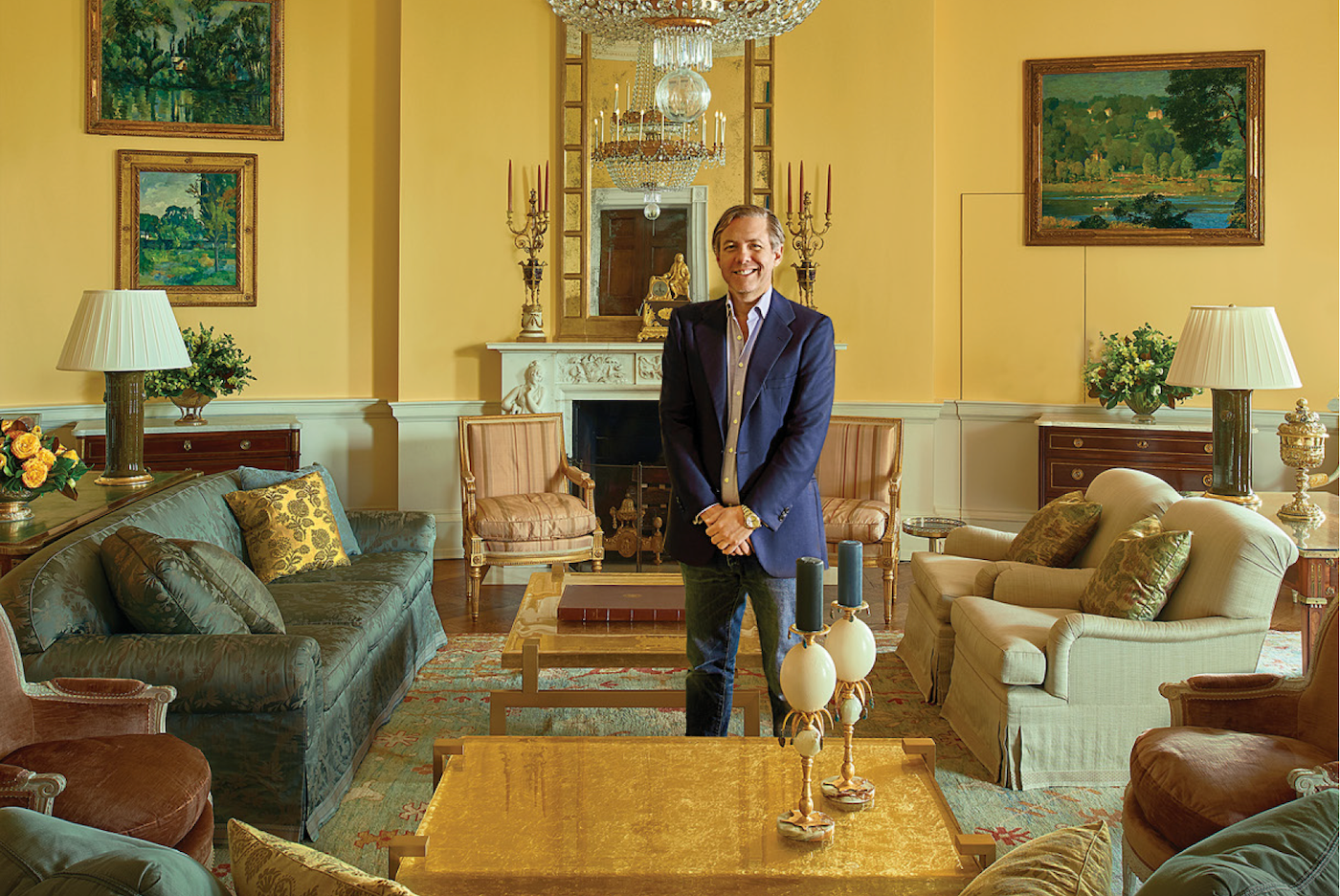There are dream clients, and then there’s the young family that Michael S. Smith helped settle in at 1600 Pennsylvania Avenue back in 2009. A veteran interior designer, he landed an interview to design the Obama White House through a series of connections and flashes of kismet. But he didn’t officially have the job, of course, until he met the client. Thankfully, they hit it off. “He said, ‘Call me Barack,’” Smith tells host Dennis Scully on the latest episode of the Business of Home podcast. “And ... that was the first and the last time in basically 10 years I ever called him Barack.”
Interestingly for such a high-profile project, Smith has kept fairly quiet in the media about his experience as the first family’s decorator—there was only an initial press release, then an Architectural Digest article in the final months of Barack Obama’s presidency. Now, however, he’s telling the whole story with a forthcoming book, Designing History: The Extraordinary Art & Style of the Obama White House, which he previews in this podcast. In it, Smith shares everything from the advice he got from Nancy Reagan to the secret code his staff used to refer to the Obamas.
Below, listen to the show and check out a few takeaways. If you like what you hear, subscribe to the show (free of charge!) and every week a new episode will be delivered to your smartphone.
High-Stakes Decorating
Make a faux pas in a normal project, and you’ve got an angry client on your hands—maybe you’re out a few thousand dollars. Make a mistake at the White House and it can lead to a national media scandal. (Remember the kerfuffle about Trump and the Oval Office busts?) Smith, no stranger to high-profile clients, was well prepared. “What you want to avoid is creating news,” he says. “If you’ve ever been in the middle of a celebrity divorce, you absolutely understand—[it’s] great advance training for working [in] the White House. ... There’s that old [medical doctrine]: First, do no harm. [Here, it was]: First, make no news.”
Checks and Balances
Everything about the experience of designing the White House, Smith shares, is a little surreal. That includes the process itself. First, there’s the challenge of keeping the project under wraps, and making sure vendors don’t send out a press release announcing their trim is on a pillow in the White House. Then there’s the arduous process of actually getting stuff into the building. He explains, “The person you buy a lamp from has to be vetted, to make sure that they aren’t a violent criminal—[there’s] all these different things, these criteria. … Then it has to be delivered to an off-site location, where it’s inspected by security people. Heavily inspected. Then it has to come to the physical White House, then you have to find a time when the family’s not around, … when you can be there, when somebody can get into the building and get into the room, with security. … That’s different than [a typical decorating job]: I go to the store and buy a lamp, I bring it over, and plug it in.”
Big Picture
Of course, designing the White House changed Smith’s life—and for a designer already obsessed with the history of decorative arts, participating directly in that history was a dream come true. But interestingly, he says, it didn’t necessarily lead to a crazy rush of new business: “In the world, presumably I’m better known now, but … I don’t know. … The majority of my practice … is still clients that I’ve had for a very long time. … Listen, it doesn’t hurt.”
Homepage photo: Michael Mundy




























